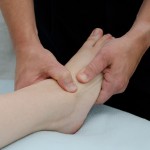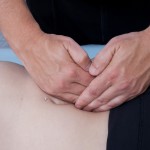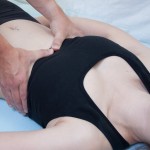My main goal for writing this article is to bring to your awareness the mechanoreceptors and ligamento-muscular reflex present within the body. I also hope to stimulate you to think outside your comfort zone of techniques, from what you are currently utilizing, to consider combining your techniques with other therapists working as a patient centered team.
Ligaments have significant input to sensation and synergistic activation of muscles. Afferent mechanoreceptors are found everywhere with in the connective tissues of the body. They are responsible for kinesthetic and proprioceptive sensation.
As Manual Therapists, there are four types of sensory nerve endings, which are responsive to mechanical stimulation that we can have an effect on. They are:
Golgi Receptors
Ruffini Receptors
Pacini Receptors
Interstitial Receptors
In our L.A.S.T. courses we discuss the roles that these receptors play, what techniques they are responsive to and what the end result is in targeting these during treatment.
Manual techniques that target these mechanoreceptors have been proven to affect both the local blood supply and the local tissue viscosity. In a study presented at the Third International Fascia Research Congress, Viklund et al. concluded that specific myofascial receptor techniques might have a longer lasting effect than classical (Swedish) massage techniques. They suggested that therapists might be encouraged to aim their soft tissue techniques to a lesser area where there is known to be high density of mechanoreceptors.
Ligaments are highly dynamic and non-stationary, yet predictable organs. It was suggested as far back as the turn of the last century that a reflex might exist from sensory receptors in the ligaments to muscles. This Ligamento-muscular reflex may directly or indirectly modify the load imposed on the ligament.
For many years we learned in our anatomy classes that ligaments and muscles were separate entities. Even many of our most popular anatomy texts still portray ligaments and muscles as separate tissues showing the student lovely clean structures running from one bone to another, not connected to any surrounding tissues. Many times during gross anatomy courses where cadaver dissection takes place, the instructor and students become very proficient in “creating” a ligament, separating it from the surrounding tissues. In reality though, these tissues are inseparable. In 2009, Jap Van der Wal published a paper in which he determined that ligaments are mostly arranged in series with the muscles, not in parallel. This means that when you tense a muscle, the ligaments are automatically tensed to stabilize the joint, no matter what its position.
The Ligamento-muscular reflex exists in most extremity joints and in the spine. Muscular activity elicited by the reflex allows synergistic activity of muscles and ligaments maintaining joint stability. This reflex may also have inhibitory effects on muscles associated with the joint. This inhibition action may prevent extremely large forces from developing in muscles, thus preventing undue stress in the ligaments.
This reflex may play a role in preservation of joint stability, inhibiting muscles that destabilize the joint or increasing antagonist co-activation to stabilize the joint.
Mechanoreceptors, Ligamento-muscular reflex and Injuries
Research has shown that a state of hypertonicity is created in muscles where a ligament has been injured, or replaced. For example, ACL ruptures and replacements cause the quadriceps, hamstring and gastrocnemius muscles to become hypertonic as a result of a lack of the ligamento-muscular reflex. This hypertonic state is also due to the removal of the mechanoreceptors of the original ACL. A large percentage of the receptors are located near the ends of the ligaments as they attach into the sub-chondral layer. This remnant is often removed in order to attach the substituted tissue. Although the stability of the joint has been re-established, patients regularly complain of not only having an increase in tonicity with in the muscle groups, but also a deficiency in both proprioception and kinaesthetic awareness. The manual therapist is then charged with the task of attempting various treatment techniques to reduce this hypertonicity. Their efforts are rarely successful and both the patient and therapist become frustrated and discouraged. Thus begins the circle of referral from one therapist to another.
In our office, as most likely in yours, we treat a variety of injuries ranging from acute to chronic. These injuries lead to the symptoms described earlier in this article. Patients have found it advantageous when I have combine my manual treatments with our Naturopathic Physician, Physiotherapist, Pilate’s Instructor and Kinesiologist. A combination of L.A.S.T. treatments along with the multimodal approach of treatment has proven to be very effective in contributing to an overall rehab program and ultimately improving the quality of life for our patients. Current evidence research has proven time and again that uni-modal approaches to therapy and rehab are inefficient. The therapists of various disciplines must work together to develop a patient centered rehab plan in order to increase the potential for better rehab outcomes.
Conclusion
As always, I hope that I have been able to serve you in some way with this information, be it a completely new perspective into your patients, be it some new thoughts about how to approach a treatment or provide you with a review and acknowledgement that what you are doing, as far as I’m concerned, is having an amazingly positive impact in improving the quality of life for your patients.
Register Now!



